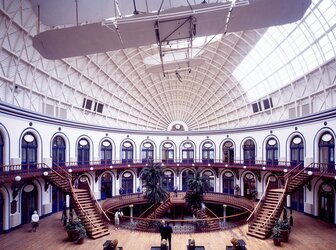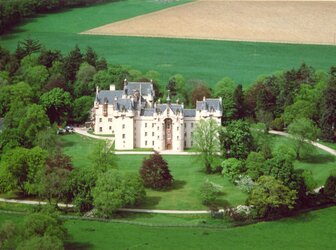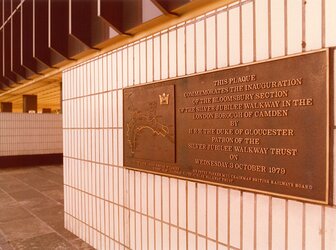Whaley's Buildings, Armagh
The two-storey stone houses at 52-58 Castle Street are dated 1773 on the corner of no.58, where they are described as Whaley's Buildings. A pair of larger houses at nos. 48 and 50 Castle Street, with basement and attics showing at the rear as four-storey houses, appear to be ...
Read more
Project details
| Title: | Whaley's Buildings, Armagh |
|---|---|
| Entr. year: | 1995 |
| Result: | Diploma |
| Country: | United Kingdom |
| Town: | Armagh, County Armagh (Northern Ireland) |
| Category type: | architectural heritage |
| Building type/ Project type: | residential building |
| Former use: | Dwelling houses |
| Actual use: | Dwelling houses |
| Built: | 18th century |
| Architect / Proj.leader: | Hearth Housing Association, Architects (Belfast - GB) |
| The Jury's citation: | "For a very fine achievement by a private housing trust in restoring to life a residential block of great interest in one of Ireland's principal historic cities, latterly a focal point of conflict" |
| GPS: | 54°20'59.64"N 6°39'16.56"W |
| Web, Links: | www.hearth-housing.org.uk/Whaleys.html |
Description:
The two-storey stone houses at 52-58 Castle Street are dated 1773 on the corner of no.58, where they are described as Whaley's Buildings. A pair of larger houses at nos. 48 and 50 Castle Street, with basement and attics showing at the rear as four-storey houses, appear to be slightly earlier in date. Nos. 2-8 Upper Irish Street are probably part of the 1773 development, but a pair of cottages at 32-34 Chapel Lane are more vernacular in style and hard to date. The houses had been derelict for up to twenty years, partly as a result of planning blight, and partly due to terrorist bomb damage. This scheme involved the restoration of a group of eleven listed Georgian buildings, reconstruction of a pair of houses that had been demolished, and the erection of three new houses to form an enclosed courtyard. Using old photographs, a new stone façade was built for reconstruction of the bombed houses, and in the remaining houses fragments and staircases, windows and plasterworks were used to reconstruct the interiors generally to what must have been their original state.
Similar projects

19th century

16th century

19th century

19th century

19th century

20th century

18th century

18th century

14th-18th century

13th century

18th century







